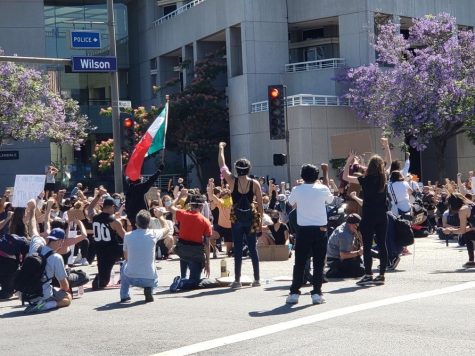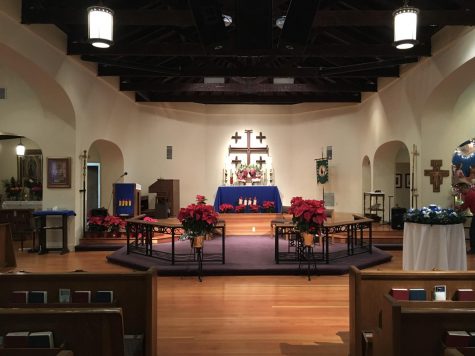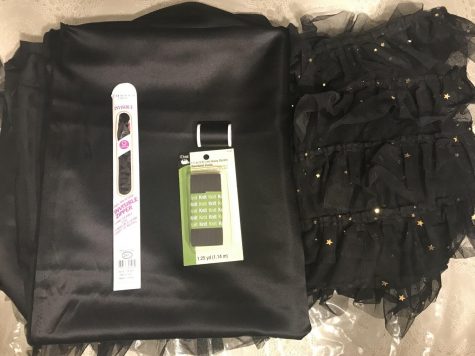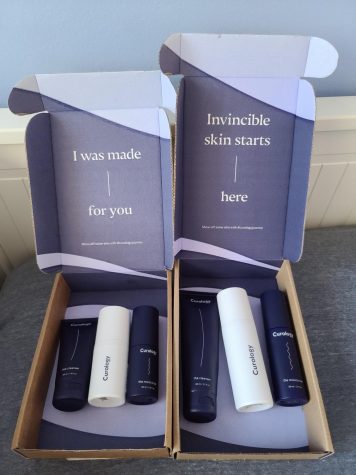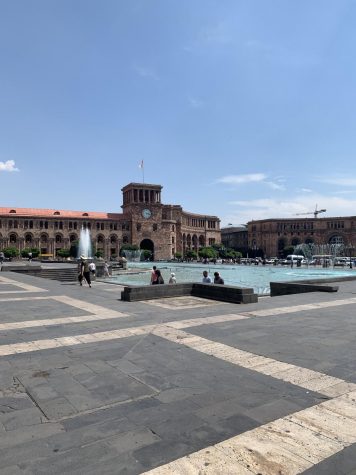Poppin’ Some Tags with Thrift Stores
For the past five years, the U.S. economy gone through a rocky patch. That’s a known fact that has been on the news every morning. The cost of living has gone up, just as unemployment rates have.
So what’s a family to do? Parents still have to provide for their families, regardless of the economy’s status. The world keeps spinning; food still has to be put on the table, the mortgage still has to be paid, and clothes still have to be put on everyone’s’ backs.
In a perfect world, clothing manufacturers’ prices would match the economy’s status. But in reality, UGGs are still $100 a pair and iPhones are still $200 each — no matter what your family’s financial situation is.
Consequently, loads of teenagers have chosen to undo material expectations. Turning away from Nordstrom and Abercrombie, they’ve turned toward thrift shops such as Goodwill and Out of the Closet. Macklemore’s “Thrift Shop,” which sold seven million copies and garnered almost 600 million views on YouTube, renewed young people’s perspective on this alternate to retail shopping.
Along the same vein of thrift stores are resale shops. According to The Association of Resale Professionals (NARTS), stores such as Buffalo Exchange and Crossroads Trading Co. collectively generated over $100 million in 2012 alone. This growing industry consists of going into stores such as Buffalo Exchange — whose closest location is right on La Brea Avenue in Los Angeles— and buying their merchandise, trading your own items for their merchandise, or selling your own clothes to the store. Buffalo Exchange had its start in 1974 in a 450 square feet shop, and has grown into the employer of over 700 people in 45 locations.
Personally, I go thrift-shopping for two reasons. First of all, there literally isn’t anything out of my budget. The retail price for high-waisted denim shorts from American Apparel ranges from about $50–$60, and a pair of shorts from Goodwill is $5. If I bought one pair of shorts from Goodwill for $5, I could buy 11 more for the price of one pair of American Apparel shorts.
Given the price, secondhand items are exactly that: secondhand. In my own experience, I’ve seen jeans with holes at the crotches and hoodies with stains on the sleeves. When asked about the condition of clothing inventory, Goodwill employee Alyssa Juarez said, “Most items here have been donated because the original owner outgrew them, so wear and tear shouldn’t be surprises to shoppers. But we don’t put anything on the floor that can’t be used.”
Unlike retail stores, you can’t just go on their online store, find what you want, check if the closest store has it in stock, then go into the mall to buy it the next day. There’s something unique and different in each thrift store, which is something else that I personally appreciate.
However, the condition of clothes and the process of actually finding something that I’d wear makes thrift-shopping time consuming. I could spend hours looking through the racks of grandma clothes at Goodwill and Out of the Closet to try and find something my size, so it’s quite pointless to go while running short on time.
Sure, there are thrift stores that often have cute clothes, but there are no guarantees. Their inventory isn’t ever set in stone. The Goodwill on Brand Avenue usually has tons of ‘90s Ralph Lauren, but that doesn’t mean any of it will be there next weekend. Shopping at thrift stores requires a decisive mind, the ability to make snap — but sound — judgements.
A lot of what I find in thrift stores is tacky, faded graphic t-shirts from the early 2000s, but along those gems are vintage items that I could only hope to find in thrift stores. In the blazer section of the Assistance League of Glendale Thrift Alley, tweed ‘80s blazers with shoulder pads were littered all over the racks. I couldn’t find an occasion I’d wear one of the blazers for, but nonetheless, I admired the display sheerly for its novelty.
It isn’t rare for style from decades ago to come back in style. Fashion recycles itself; high-waisted shorts have come back from their heyday in the ‘70s, Doc Marten boots have been revived from the punks in the ‘80s and grunge bands ‘90s. Instead of going to Urban Outfitters or American Apparel to buy overpriced carbon copies of revived fashion, chances are, local thrift stores have them in stock for a fraction of the price.
Every couple of weeks, my best friend, Tasha Irianto, and I make a point to go to the local Goodwill on Brand Avenue together. While sorting through the racks of clothes, I asked her if she remembered how we started our visits to thrift stores in the first place. Tasha said, “We didn’t have that much money at the time, so we figured, ‘What better way to spend it than super cheap clothes?’ It’s like a bang for your buck. We were such mallrats as sixth graders, but I guess we’ve just expanded our horizons as we transitioned into eighth grade, when we started going together.”
Personally, I can recollect memories of tagging along with my mom to Goodwill after cleaning out my closet in the spring. I took all the clothes I outgrew that accumulated in my closet over the past year and stuffed them into shopping bags to drop off at the donator’s area, and rushed into the store to restock my closet. A lot of thrift stores aren’t just about receiving; they’re about donating, too.
Beside being a thrift store, Goodwill is a nonprofit organization that provides services for disabled people. The money raised at Goodwill thrift stores through purchases is used to fund career services for disabled people, and they are eventually placed into sustainable employment. Through Goodwill, 216,000 people have earned jobs in 2012. Those hundreds of thousands of people have collectively earned $3.62 billion — money that they may use to support their families by putting food on their dinner tables.
However, thrift stores aren’t specifically for low socio-economic class families with no other choice than to buy second hand clothes; buying items from thrift stores is a legitimate aesthetic choice for many. A familiar face at Clark, sophomore English teacher Jennifer Davis is also a fan of thrift stores.
“I usually go when the weather changes, and I always go with something in mind. But when I go for one thing, I easily find five or six other items. It’s just so cool because I’ve spent like $20,” said Mrs. Davis. Half of the sophomore class is familiar with the white owl on top of the metal backpack carrier in the Davises’ room and the yellow sunflower van Gogh imitation near the bookshelves. Mrs. Davis said she found both of those decorations at Goodwill.
Like Mrs. Davis, I make aesthetic choices that stem from Goodwill’s racks. I use thrift stores’ diverse types of clothes that are donated from dozens of different people’s closets, and they go from thrift stores to my own closet to make my own particular style.

INTERESTS/HOBBIES: ¯\_(ツ)_/¯
EXTRACURRICULAR ACTIVITIES: running around to make a yearbook.
THREE WORDS TO DESCRIBE ME ARE: can i LIVE
IN...




